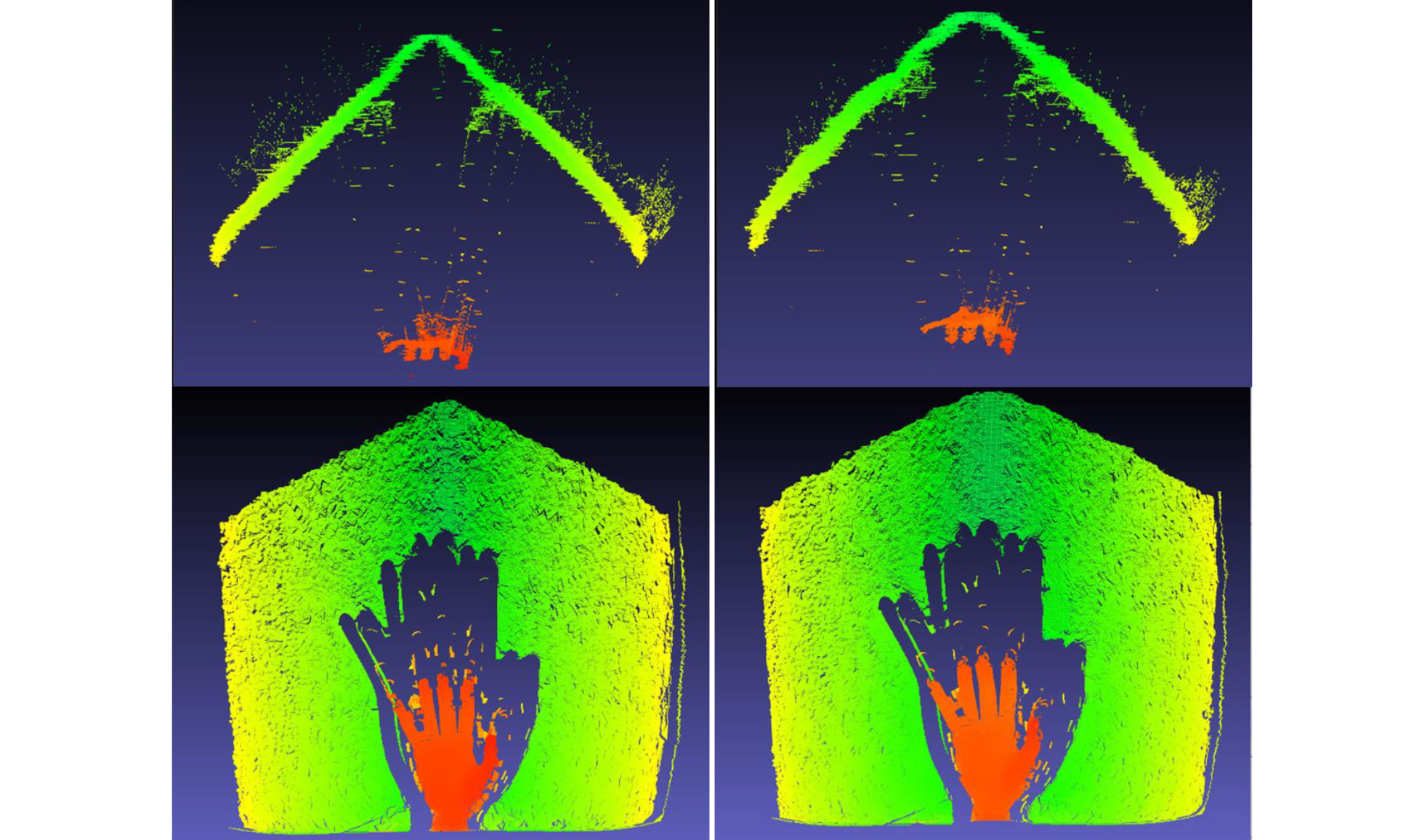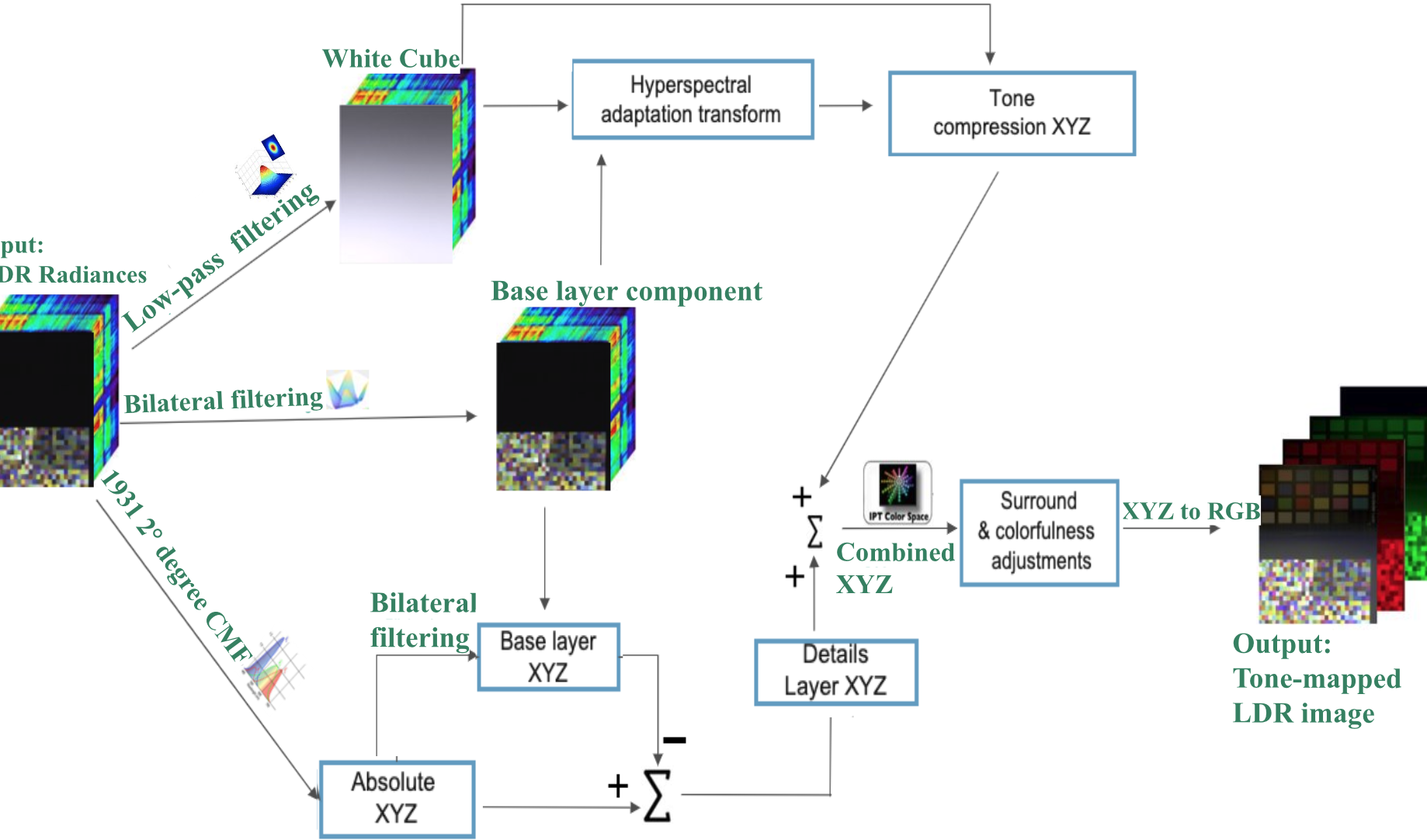We introduce an innovative 3D depth sensing scheme that seamlessly integrates various depth sensing modalities and technologies into a single compact device. Our approach dynamically switches between depth sensing modes, including iTOF and structured light, enabling real-time data fusion of depth images. We successfully demonstrated iToF depth imaging without multipath interference (MPI), simultaneously achieving high image resolution (VGA) and high depth accuracy at a frame rate of 30 fps.
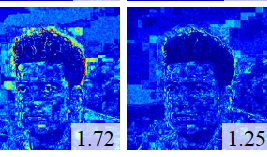
To accommodate displays with varying dynamic ranges, image encoding frameworks are emerging that propose to include metadata within a standard dynamic range (SDR) image to encode an arbitrary, user-defined residual which allows the SDR image’s pixel values to be transformed into its intended high dynamic range (HDR) version. The suggested metadata is a compressed version of the gain map computed as the pixel-wise ratio between the HDR and SDR image. Multiplying the gain map with the SDR image reconstructs the HDR image. This paper proposes an effective alternative for HDR recovery in the form of a pixel-wise exponent map instead of the multiplicative gain map. We demonstrate experimentally that the exponent map approach produces higher quality HDR reconstructions over the gain map strategy according to several metrics.
In the past, several research studies have highlighted the idea that spectral data produces better tone-accurate images. Inspired by these studies, this paper introduces the spectral image color appearance model titled SiCAM, designed for tone mapping an HDR hyperspectral radiance cube to a three-channel LDR image. It is to be noted that SiCAM is inspired by the iCAM06 image color appearance model, where we adapted the iCAM06 for hyperspectral input by embedding a spectral adaptation transformation, extending the existing chromatic adaptation transform (CAT) method. Additionally, we conducted a psychophysical experiment to evaluate the proposed model and the effectiveness of having spectral data instead of traditional three-channel HDR input, for HDR image rendering. The proposed model is also assessed in comparison to the performance of iCAM06 and the gamma tone mapping approaches. The subjective evaluation indicates that SiCAM either outperformed these methods in terms of both accurate color appearance and pleasantness or atleast generated comparable results. This also hints that the spectral information might be able to improve not only the acquisition capabilities but also display rendering. Due to the lack of openly available HDR hyperspectral datasets, we captured the HDR hyperspectral radiance images of four HDR scenes, which will be made publicly accessible.
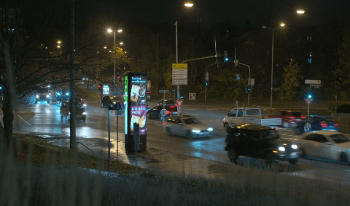
In order to improve traffic conditions and reduce carbon emissions in urban areas, smart mobility and smart cities are becoming increasingly important measures. To enable the widespread use of the cameras required for this, cost and size requirements necessitate the use of low-cost standard dynamic range (SDR) cameras. However, these cameras do not provide sufficient image quality for a reliable classification of road users, especially at night. In this paper, we present a data-driven approach to optimise image quality and improve classification accuracy of a given vehicle classifier at night. Our approach uses a combination of image inpainting and high dynamic range (HDR) image reconstruction to reconstruct and optimise critical image areas. Therefore, we introduce a large HDR traffic dataset with time-synchronised SDR images. We also present an approach to automatically degrade the HDR traffic data to generate relevant and challenging training pairs. We show that our approach significantly improves the classification of road users at night without having to retrain the underlying vehicle classifier. Supplementary information as well as the dataset are published at https://www.mt.hs-rm. de/ nighttime-traffic-reconstruction/ .
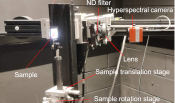
Gonioradiometry plays a fundamental role in understanding the scattering properties of materials. As light interacts with surfaces, its scattering behaviour varies across different incident angles, wavelengths, and surface characteristics. Gonioradiometric measurements offer a systematic approach to quantify these intricate scattering patterns, by means of the Bidirectional Scattering Distribution function. In this paper, a new approach is presented to quantify this Bidirectional Scattering Distribution Function, for which an existing measurement instrument has been enhanced by incorporation of a hyperspectral imaging device. The hyperspectral imaging system enables detailed spectral reflectance data collection for each pixel, paving the way for measuring samples where the reflectance properties vary along the surface. Challenges such as zooming and dynamic range constraints are addressed, with the paper detailing the design and evaluation of the system. The hyperspectral gonioradiometer offers promising avenues for future research and applications in visual appearance metrology and material characterisation.
